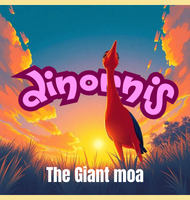In Depth
Toxochelys is a genus of sea turtle that lived during the late Cretaceous, and is also one of the most common sea turtles that lived in the Western Interior Sea Way, a shallow sea that once submerged the central portion of the North American Continent. As a genus, Toxochelys seems to be in-between modern sea turtles and other turtles in its evolutionary development. This suggest that while having a common ancestor, Toxochelys represents an independent evolutionary off shoot, though ultimately one that died out without any modern day descendants.
At up to two meters long, Toxochelys was big though still substantially smaller than some late Cretaceous sea turtles such as Archelon and Protostega which were swimming in the same waters at the same approximate time as Toxochelys. The Western Interior Sea was a dangerous place, and predators of Toxochelys likely included mosasaurs such as Prognathodon and Tylosaurus, as well as large sharks such as Cretoxyrhina that had specially adapted teeth that could cut through any biological substance be it flesh, shell or even bone with the upmost ease.
Further Reading
- [On Toxochelys latiremis]. - Proceedings of the Academy of Natural Sciences of Philadelphia 25:10. - Edward Drinker Cope - 1873. - On the skeleton of Toxochelys latiremis. - Published Field Columbian Museum, Zoological Ser. (later Fieldiana: Zoology), 1(5):101-106, pls. 14 &15. - O. P. Hay - 1896. - A revision of the species of the family of fossil turtles called Toxochelyidae, with descriptions of two new species of Toxochelys and a new species of Porthochelys. - Bulletin of the American Museum of Natural History 21(10):177-185. - O. P. Hay - 1903. -The vertebrate fauna of the Selma Formation of Alabama. Part IV. - The turtles of the family Toxochelyidae. Fieldiana: Geology Memoirs 3(4):145-277. - R. Zangerl - 1953. - New material of Toxochelys latiremis Cope, and a revision of the genus Toxochelys (Testudines, Chelonoidea). - Journal of Vertebrate Paleontology, 8(2):181-187. - E. L. Nicholls - 1988. - Taxonomic comparison and stratigraphic distribution of Toxochelys (Testudines: Cheloniidae) of South Dakota, by M. H. Carrano. In, The Geology and Paleontology of the Late Cretaceous Marine Deposits of the Dakotas. Geological Society of America, Special Paper 427, - J. E. Martin & D. C. Parris (eds.) - 2007. - A juvenile Toxochelys latiremis (Testudines, Cheloniidae) from the Upper Cretaceous Niobrara Formation of Kansas, USA. - Neues Jahrbuch f�r Geologie und Pal�ontologie. Abhandlungen 249(3):371-380. - A. T. Matzke - 2008. - Osteology of the skull of Toxochelys (Testudines, Chelonioidea). - Palaeontographica Abteilung A 288(4):93-150. - A. T. Matzke - 2009.









